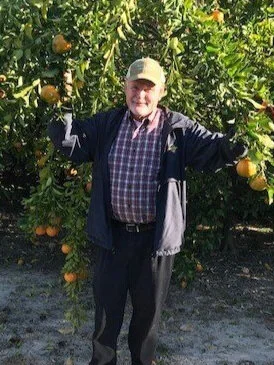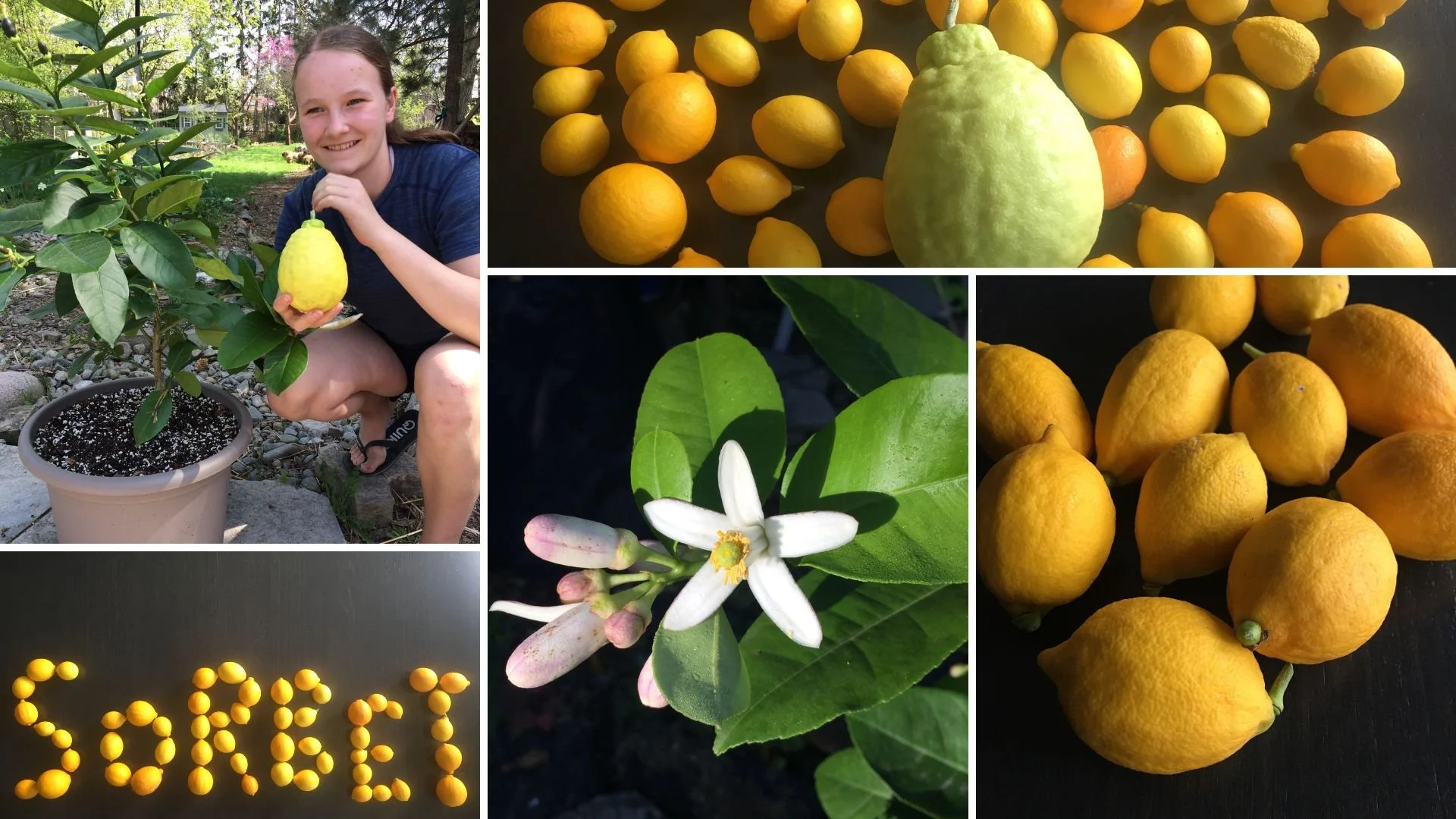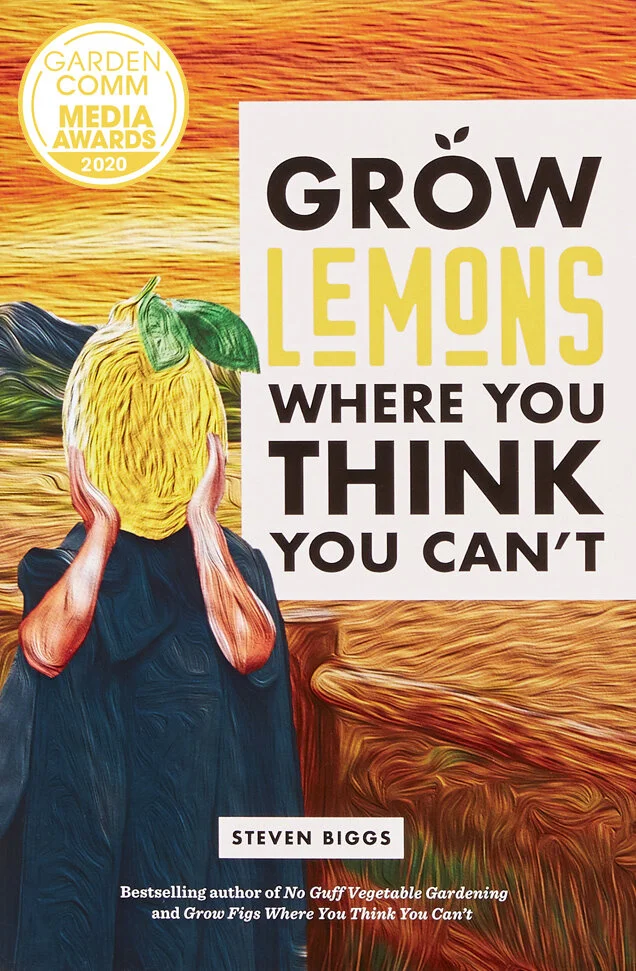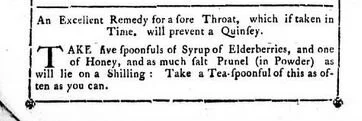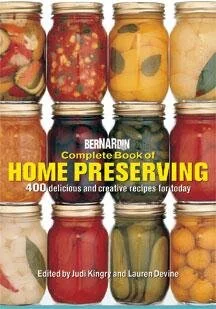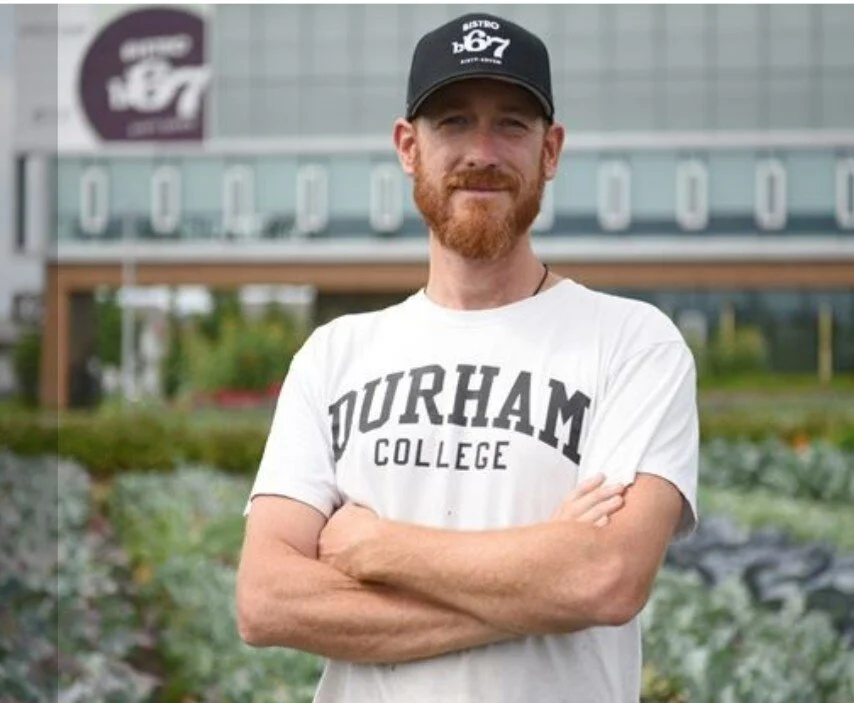Susan Poizner talks about the virtual apple tasting she recently held to raise money for her community orchard.
Grow Quince and Garden Journal
Nan Stefanik talks about growing quince. Helen Battersby talks about the Toronto & Golden Horseshoe Gardener’s Journal
Pawpaw in Ontario with Paul DeCampo
A Windy Newfoundland Homestead with a Sustainable Focus
Edible Front Yards and Sensory Gardens
Meet the Indiana Jones of Pawpaw
Grow Fruit in a Small Garden
Foodscaping
Forest Gardens and Fruit
We chat with forest garden designer and edible landscaper Mark Lord about lesser know fruiting plants.
Crater Garden, Regenerative Farm and Family
Raspberry-Leaf Tea and other uses of the Genus Rubus
It’s an astringent. And it might already be growing in your yard or nearby. Today we take you beyond eating raspberry fruit to explore the herbal and medicinal properties of the plant itself—along with its relatives in the genus Rubus. Ever heard of raspberry-leaf tea? Tune in, and find out about the many uses of this plant.
Farming Cold-Hardy Citrus in South Carolina
The Johnny Appleseed of cold-hardy citrus, Stan McKenzie, joins us to talk about how to grow citrus in cold climates.
McKenzie talks about how he became a "citraholic" and started down the path of growing citrus on his USDA Zone 8 farm and nursery in South Carolina.
McKenzie Farms specializes in citrus suited for cold climates.
McKenzie says that he coined the term “citraholic” to describe people with a citrus-growing obsession. “It’s not really expensive, and the hangover isn’t nearly as bad,” he says with a laugh.
Getting Started in Cold-Hardy Citrus
He recalls his parents taking him to visit his grandmother when he was a child. Near her house was a scraggly tree that died back to the ground every winter. When he learned it was an orange tree, he was fascinated, and asked his dad to order citrus trees from Florida for their farm.
“Every one of them was killed the very first winter,” he says, explaining that he and his father didn’t know how to overwinter citrus.
Fast forward many years, while visiting Charleston, South Carolina, McKenzie saw a grapefruit tree loaded with golden grapefruit. “It lit the match again,” he says.
As he researched cold-hardy citrus he learned that satsuma trees are grown commercially in colder parts of Japan. It wasn’t long before he started growing satsuma. As his satsuma tree grew and prospered, everybody who saw the tree wanted one.
“That put me in the citrus business,” he says.
Cold-Hardy Citrus Tips
Overwintering Citrus Outdoors
McKenzie says that when overwintering in-ground citrus plants in borderline areas such as his, some citrus enthusiasts wrap the tree in a string of incandescent lights and then cover it with and insulating material. The lights give off enough heat to get the citrus plant through especially cold weather.
Another technique is “micromisting,” where a fine mist of water is sprayed over the trees. As the water freezes, it gives off heat—enough heat for the citrus plants to survive cold weather.
Overwintering Citrus Indoors
Where winter temperatures are more severe, people often bring potted citrus plants into the house over the winter. McKenzie says that the biggest challenge with this technique is that the air in most homes is too dry, causing the plants to drop leaves. The well-known Meyer lemon is especially finicky, he says. However, leaves will grow back in spring.
To maintain a higher humidity that is better suited to citrus plants, he recommends filling a tray (such as the foil trays sold for roasting turkeys) with pebbles and water. He says that spritzing with water regularly helps too.
Find Out How to Grow Your Own Lemons
Harvest more lemons this year. Grow Lemons in Cold Climates Masterclass shows you how to grow a lemon tree in a pot or outside with protection. And get lemons!
Top Questions
Thorny growth at the base of the plant. McKenzie explains that many citrus are grafted onto a rootstock of trifoliate orange—a very thorny plant. Sometimes that root will send up a shoot, which, if left to grow, it will overtake the desired variety grafted onto it.
Wrinkled leaves and squiggly lines. He says that this is caused by an insect pest called the citrus leaf miner, which tunnels inside the leaf. While unsightly, they do no harm to the plant and do not affect the fruit.
Common Cold-Hardy Citrus
Prague Satsuma. This hardy satsuma survived the 8°F (-13°C) weater that killed many of the other satsuma varieties in his orchard.
Thomasville Citrangequat. McKenzie says that this cold-hardy citrus is a good lime substitute.
Crosses with trifoliate orange. He says there are many crosses with trifoliate orange that have excellent cold hardiness, but the fruit is usually bitter.
Yuzu, aka Japanese lemon, is very cold-hardy. He knows of people growing this citrus in colder areas such as Raleigh, North Carolina.
Poncirus Trifoliata (a.k.a. Trifoliate Orange)
The trifoliate orange, also known as trifoliate lemon and Poncirus, is extremely hardy, surviving in areas colder than USDA Zone 7. It is a common rootstock. McKenzie says that the small fruit are very seedy and bitter.
Connect with Stan McKenzie
Website: mckenzie-farms.com
Facebook: McKenzie-Farms-Nursery-174405135904728
Find Out How to Grow Your Own Lemons
Harvest more lemons this year. Grow Lemons in Cold Climates Masterclass shows you how to grow a lemon tree in a pot or outside with protection. And get lemons!
Looking for More Citrus Information?
Connect with the Food Garden Life Show on Social Media
Canadian Garden Zones vs. US Garden Zones
Helen Battersby of torontogardens.com
We are joined by Helen Battersby, a Toronto garden blogger, garden coach, and publisher of the Toronto & Golden Horseshoe Gardener’s Journal.
She explores a topic that a lot of new gardeners are not even aware of—that there are different garden-zone systems used in Canada and the USA.
Always eager to push zone boundaries, Battersby finds that many gardeners live in a state of “zone denial.”
Garden Zones
Battersby talks about the difference between the Canadian and American garden zone systems—both of which provide gardeners with a zone number to use when selecting hardy plant material. The lower the number, the colder the garden zone.
She points out that while her garden is a zone 6 using the Canadian system, it’s a zone 5 using the American system.
The Canadian system uses a number of variables including lowest mean temperature of the coldest month, highest mean temperature of the hottest month, precipitation, and the number of frost-free days.
The American (U.S. Department of Agriculture, or USDA) zones are based solely on average annual minimum temperatures.
She likens the Canadian system to a Betamax; and the US systmem to the VHS.
TorontoGardens.com
Battersby and her sister, Sarah, run the award-winning blog torontogardens.com.
They started the blog at a time when a lot of Canadian gardening magazines were folding, with a goal of filling the gap left by the loss of the gardening magazines.
The Toronto & Golden Horseshoe Gardener’s Journal
The journal, in its 29th year, was started by Margaret Bennet-Alder. She entrusted the publication of the journal to the Battersby sisters when she was 90.
The journal was born out of tragedy. Bennet-Alder’s son David was diagnosed with schizophrenia. To track his medications and appointments, he created a booklet that had a pair of pages for each week. She saw his book with its seven weekdays, along with an empty eighth space. She decided to use that empty space for garden tasks. And so was planted the seed for The Toronto Gardener’s Journal.
Her son helped her refine the design and taught her how to use software for the creation of the first print run of 500. It became a meaningful project for the both of them.
Connect with TorontoGardens.com
Website: torontogardens.com
Facebook: Toronto.Gardens
Twitter: torontogardens
Instagram: toronto_gardens
Connect with The Food Garden Life Show on Social Media
Practical Vegetable Gardening Advice
Downtown Rooftop Edible Garden Gives a Breath of Fresh Air
Saskia Vegter, Urban Agricultural Co-ordinator at 401 Richmond
We’re joined by Saskia Vegter, the Urban Agricultural Co-Ordinator at 401 Richmond, a former industrial building that has been transformed into a cultural hub in a dense downtown Toronto neighbourhood.
Vegter, who previously worked in event management, felt drawn to work in horticulture.
"I just remembered the feeling of connection when my hands were in the soil.”
401 Richmond
401 Richmond is a former industrial building, built in 1899. Vegter explains that the currant owner restored the building to transform it into a cultural hub for artists and creative entrepreneurs.
Tenants currently include art galleries, a book publisher, a film festival, artists with studios, and a daycare.
The Rooftop Gardens
401 Richmond rooftop garden
The rooftop has three garden areas:
A deck-patio area, which includes trees and shrubs in containers
An extensive sedum green roof
The “mini farm,” which has fruit, vegetables, herbs, and flowers for cutting growing in containers
Tenants use the rooftop for meetings, lunches, to meditate—or just to get a breath of fresh air, says Vegter.
Children from the daycare often spend time on the rooftop, which provides the opportunity for activities such as herb tasting.
Rooftop Crops
Ultra-dwarf apple trees grow in the same containers as the chums (cherry-plums), with strawberry plants at the base
Luffa grows up the pergola
Planters with edibles are planned for edibility AND colour, using plants with ornamental properties
New to the garden this year is a fig tree
Wildlife on the Rooftop
Despite being on a rooftop in a downtown neighbourhood, Vegter says that there are lots of visitors. She laughs as she talks about the squirrel that left her gifts of half-eaten tomatoes during the summer.
She says that other wildlife includes swallowtail caterpillars, hummingbirds, honeybees, and ladybugs.
Connect with Saskia Vegter
Website: 401richmond.com
Instagram: 401rooftopgarden
Connect with The Food Garden Life Show on Social Media
New Book for Northern Gardeners
Elderberry: Forgotten Fruit Makes a Comeback
In our second chat with Kentucky farmer and author John Moody, we talk about elderberry.
Moody is the author of The Elderberry Book, in which he explores not only the cultivation and use of elderberry, but also it’s rich history.
Long History of Elderberry Use
Moody told his publisher, “I want to write a book about elderberry because it’s been almost 1,400 years since there was a book written about only elderberry.”
With his knowledge of Latin, Greek, and Hebrew, Moody has been able to explore its use and lore in ancient texts.
There is a lot of story and lore involving elderberry in more recent times too. He points out that they can be found in Harry Potter, Monty Python, Shakespeare—and are even the subject of a Hans Christian Andersen fairy tale.
Elderberry on his Farm
Moody says that on his farm, each of his children is required to have a homestead business. His daughter Abby chose elderberry syrup—and the business has done extremely well.
Elderberry is in demand: He says that there is currently not enough elderberry to supply demand in North America.
Using Elderberry
Elderberry recipe from a calendar made in Nova Scotia, Canada in 1793
The elderberry fruit has many uses, including juice, tea, jelly, pie, and marinades.
The flowers can also be consumed, and are frequently used in teas, salads, and fritters.
But Moody says there is a rich history of use of medicinal use of other parts of the elderberry plant.
Top Tips for Growing Elderberry
Moody’s top three tips for growing elderberry:
Grow a number of varieties to determine which will be the most productive in your conditions
The least expensive way to get plants is by rooting hardwood cuttings
Elderberry is a moisture-loving plant, so give it a wet location, for example, near a downspout
Connect with John Moody
Personal Website: johnwmoody.com
Elderberry Syrup: abbyselderberry.com
Connect with The Food Garden Life Show on Social Media
New Book for Northern Gardeners
Growing Citrus in Vancouver
Growing in-ground Meyer lemons, limes, and tangerines in Vancouver.
Greg Neal from North Vancouver tells us how he got the bug for growing citrus.
At last count he had 19 varieties around his suburban yard, some in the ground, some in pots, and some in his greenhouse.
He takes delight in seeing the look of surprise on the face of delivery people who notice lemons, tangerines, and limes growing in his front yard.
Lemons in Cold Climates
Neal says that memories of lemons growing around his aunt’s California yard inspired him to look into growing lemons at home.
He learned that Meyer lemons are quite cold hardy, and, seeing Meyer lemon plants for sale in 2006, came home with three plants.
He kept one plant in the house; it died. But the two that he stored in his cold garage for the winter lived.
He now grows Meyer lemon directly in the ground, covering it with a string of incandescent lights and fabric for winter protection. The lights emit just enough heat to get the plant through the coldest days.
He explains that the fruit takes about one year to mature—so it’s important to protect it from freezing over the winter.
His top tip for would-be lemon growers is not to grow them indoors.
Poncirus Trifoliata (a.k.a. Trifoliate Orange)
Neal grows trifoliate orange, which he says is mainly an ornamental.
Neal also grows trifoliate orange in his yard.
He explains that it is the most cold hardy of the citrus.
Unlike lemon, it drops its leaves for the winter.
With a laugh he says that some varieties of trifoliate orange are “sort of” edible, while with others, you think you’re being poisoned.
Connect with Greg Neal
E-mail: citrusguy@shaw.ca
More on Cold-Climate Lemons
Looking for more information about growing lemons in cold climates? Head over to the Lemon Home Page.
Find Out How to Grow Your Own Lemons
Harvest more lemons this year. Grow Lemons in Cold Climates Masterclass shows you how to grow a lemon tree in a pot or outside with protection. And get lemons!
Connect with the Food Garden Life Show on Social Media
Book: Growing Lemons in Cold Climates
If you’ve ever wanted to grow a lemon in a pot (or, in the ground if you’re in a borderline area), this book tells you how!
Getting Scrappy over Quince
Toronto master preserver and pastry chef Camilla Wynne joins us to talk about preserves—and about her Quince Scrap Jelly.
Wynne hates to waste quince scraps left over from making her quince ice cream because the scraps are full of flavour and pectin. The scraps are like gold to her because it’s hard to find locally grown quince in Toronto.
Wynne, the author of Preservation Society Home Preserves: 100 Modern Recipes, teaches preserving classes and writes a syndicated newspaper column about preserving.
Locally Grown High Pectic Fruit
Wynne is fan of currants, which contain lots of pectin. She explains that because of the pectin, getting a good set on jelly is quite easy.
“You’re never worried about not getting a set.“
She makes red currant syrup, which she says is nice served with sparking water or in cocktails.
She also uses red currant syrup to make Scarlett Pears, which are pears preserved in currant syrup. She explains that the pears take on a beautiful red colour.
When it comes to using quince jelly, she says it’s an excellent complement to cheeses, and is great for glazing meats. Or just enjoy it as jelly—it’s beautiful, with the pink colour that develops as it’s cooked.
Connect with Camilla Wynne
Website: preservationsociety.ca
Facebook: Preservation-Society-212797788785940
Twitter: PrsrvtnSociety
Instagram: prsrvtnsociety
Connect with The Food Garden Life Show on Social Media
New Book for Northern Gardeners
In Search of the Elusive Colorado Orange
Jude and Addie Schuenemeyer
In a broadcast that originally aired on The Food Garden Life Radio Show, we chat with Jude Schuenemeyer from Colorado about the history of apple cultivation in Colorado, his work finding and preserving heritage apple varieties—and the recent “rediscovery” an a variety that he and his wife Addie have been working to track down and identify for 20 years: the Colorado Orange.
Schuenemeyer, a Sherlock Holmes of the apple world, scours historical horticultural records and talks to old timers, as well as using technology such as genetic fingerprinting.
The Colorado Orange
Schuenemeyer weaves together the threads of the story of the Colorado Orange, which include:
The influx of people to Colorado with the Pike’s Peak Gold Rush in the 1850s
A growing apples industry that fed these newcomers
The development of apples that would survive in the harsh conditions
Historical descriptions of the apple
Genetic testing
And, finally, finding a nearly forgotten set of wax apples that permitted the positive identification of the variety
Montezuma Orchard Restoration Project
With their passion for finding, saving, and sharing historical apple varieties, the Schuenemeyers eventually closed their nursery business and founded the Montezuma Orchard Restoration Project, a non-profit organization that works to preserve Colorado’s fruit-growing heritage and restore orchards to the culture and economy of the region.
Connect with Jude Schuenemeyer
Website: montezumaorchard.org
Emma’s Tomato-Talk Segment
We chat with Sarah Page about preserving tomatoes.
Page is a contributor to the latest version of the Bernardin Complete Book of Home Preserving: 400 Delicious and Creative Recipes for Today.
Page, who works as a recipe developer and tester, is a trained consumer chef and home economist. She loves creating new recipes with local and seasonal harvests.
Biggs-on-Figs Segment
We share questions and Answers from Steven’s Latest book, Growing Figs in Cold Climates: 150 of Your Questions Answered.
Connect with The Food Garden Life Show on Social Media
New Book for Northern Gardeners
Preserving the Apple Harvest
Recipe developer and tester Sarah Page talks about preserving apples
We dig into the art and science of preserving—and talk about preserving apples— with Sarah Page, a contributor to the latest version of the Bernardin Complete Book of Home Preserving: 400 Delicious and Creative Recipes for Today.
Page, who works as a recipe developer and tester, is a trained consumer chef and home economist. She loves creating new recipes with local and seasonal harvests.
Preserving Tips
Two of Page’s top tips for successful preserving are:
Use a tested and approved recipe
Use fresh produce
And her tip for first-timers? “Don’t be intimidated at all!”
“If you can cook, you can can,” she says.
Sarah Page contributed recipes to the updated edition of the Bernardin Complete Book of Home Preserving
Apples
Page, who grew up in a household where her mother served applesauce regularly, loves to work with apples and shares a few of her favourite ideas:
Apple-cranberry butter
Preserving apples for pie filling later in the year
Apple sauce with a savoury flavour (e.g. chipotle)
Leaving the skin on pink apples when making apple sauce to give the sauce a pink colour
No Pectin?
Apples contain lots of pectin and sugar. Page explains that that makes them a useful addition when making jam with low-pectin fruit, because they can be used in place of commercially prepared pectin.
If you’re planning to preserve a lot of apples, Page says that an old-fashioned hand-crank food mill is a worthwhile investment.
Want to Grow Fruit at Home?
Check out the No Fuss Fruit for Northern Gardeners Masterclass.
Grow a Food Forest
Ryan Cullen, field supervisor at Durham College, talks about the new food forest at Durham College.
Make a Food Forest
We chat with Ryan Cullen, the field supervisor at Durham College, about the newly planted food-forest garden at the college’s Whitby campus.
Cullen oversees a diverse market garden that includes tree fruit, small fruit, cut flowers, field vegetables, greenhouse vegetables, and microgreens. He previously joined us on the show in Aug 2019. Click here to tune in to that episode.
Food-Forest Garden
Cullen explains that the idea behind the food forest is to grow a mix of food-producing species, layered in the same way that a forest is. There’s a herbaceous layer at ground level, a shrub layer, and a canopy layer of trees above.
With time, the food forest becomes self-maintaining and, with the appropriate mix of plant species, can have self-renewing fertility.
The top layer of the food-forest garden is the “canopy” layer. Cullen says that they planted this layer with fruiting tree species including cherries, plums, persimmon—and even a hawthorn.
The lower herbaceous and shrub layers, which are still being developed, will be a polyculture—a mix of different plants. Along with edible properties, plants in the lower layers might make available soil nutrients (deep-rooted plants bring up nutrients,) supply nutrients (pea shrubs capture nitrogen from the air,) and attract pollinator species.
Lower-layer plants include bee balm, chamomile, rosa rugosa (for rose hips), strawberreis, and blueberries. Cullen says that this list will grow, as there is still a lot of planting to do in this layer.
Food and Farming Program
The on-campus market garden is part of Durham College’s Food and Farming program, which focuses on urban and small-scale agriculture.
The program has a field-to-fork philosophy. Located on a former industrial site, the market garden produces a variety of vegetables and fruits to supply the on-campus restaurant, Bistro 67.
In addition to supplying the restaurant, the harvest also goes into a community-shared agriculture program (CSA) and farmers market.
Connect with Durham College
Connect with The Food Garden Life Show on Social Media
New Book for Northern Gardeners
My new book, Growing Figs in Cold Climates: 150 of Your Questions Answered is now available!
This book will help you apply creative “fig thinking” in your garden and harvest fresh figs even if you have a short summer or cold winters. With some fig thinking, you can harvest figs in areas where they don’t normally survive the winter! In this book, I share many of the questions I have been asked about growing figs in temperate climates, along with my responses.

